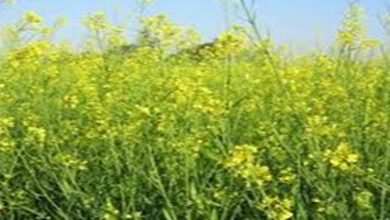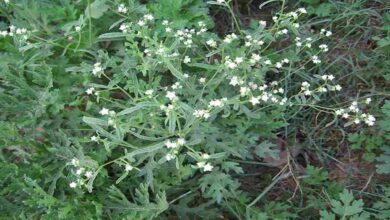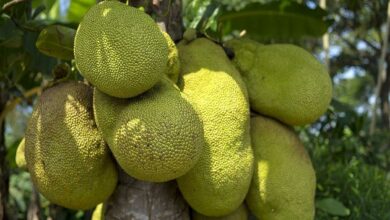Wheat Crop: Adopt these measures to protect the wheat crop from disease, otherwise the crop will be destroyed
Wheat Crop: The wheat crop has begun to produce ears, and open smut disease is also seen in the wheat crop at the same time. The crop is affected by this. A fungus is the source of the dangerous illness known as “open smut” or “loose smut” disease in wheat. This illness spreads quickly in damp, chilly conditions. This results in burned wheat leaves and a significant decrease in yield.

Open smut produces black powder rather than ear grains. A white membrane encasing this powder eventually ruptures, releasing the spores into the atmosphere. The disease epidemic in the next year’s crop may be exacerbated by the contaminated seed.
Farmers ought to do this
Farmers should go around the field, remove any plants afflicted by open smut, gather them in a plastic bag, and kill them in order to protect their wheat crop from this disease. Add two grams of Vitavax to each kilogram of seed before planting. Treat the seed with Thiram or Captan medicine for subsequent planting. Apply a 0.2% Vitavax solution to the impacted fields.
In the outdoors, if the ear is gleaming
Open Kandua is a seed-borne disease that spreads via the air in wheat fields, according to Dr. I.K. Kushwaha, professor of Krishi Vigyan Kendra. This black ear, which is entirely wrapped in a membrane, simultaneously emerges before the healthy ear. The black powder spreads over the field as soon as the wind blows, and the white membrane flies. It travels to any healthy ear and exerts its influence there.
Loss the next year as well
The crop will be entirely covered with black grains the next year if you plant this black grain, and nobody will purchase it on the market. At the same time, farmers should go to their fields before the sun comes up, remove the black ear plant that is gleaming there from its roots, and bury it in the ground to eliminate it. Following this, the crop will be protected and its spread will fully halt. To stop this illness from spreading in the field, growers should simultaneously spray the crop with tebuconazole and propiconazole.





